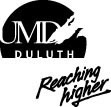

Microbial Source Tracking
We have isolated fecal coliform bacteria from streams, soils, periphyton, and beach areas and identified their sources using the HFERP molecular fingerprinting method to help determine the most probable sources of fecal indicator bacteria in different aquatic habitats. We are collaborating with Dr. Michael Sadowsky's lab group at the University of Minnesota on this series of projects. Together with these colleagues, we have established a DNA fingerprint database (Dombeck et al. 2000. Appl. Environ. Microbiol. 66:2572-2577; Johnson et al. 2004. Appl. Environ. Microbiol. 70:4478-4485; Hieb 2004. M.S. Thesis) and used it to identify the animal sources of E. coli bacteria in streams (Hieb 2004. M.S. Thesis), riverine soils (Ishii et al. 2006. Appl. Environ. Microbiol. 72:612-621), and aquatic periphyton communities (Ksoll 2006. M.S. Thesis; Ksoll et al. 2007. Appl. Envrion. Microbiol 73:3771-3778). Our current project uses this method to identify seasonal changes in the sources of fecal bacteria found at beaches in the Duluth-Superior harbor (Ishii et al. 2007. Environ. Sci. Technol. 41:2203-2209). We recently obtained new funding to examine short-term changes in the abundances of fecal bacterial from waterfowl and humans at these beaches using hybridization and quantitative PCR methods. Our goal is to determine what sources of E. coli bacteria are contributing to beach closures at different times of the year.
This research is being supported by the Minnesota Sea Grant Program and the Western Lake Superior Sanitary District.

For Prospective:
